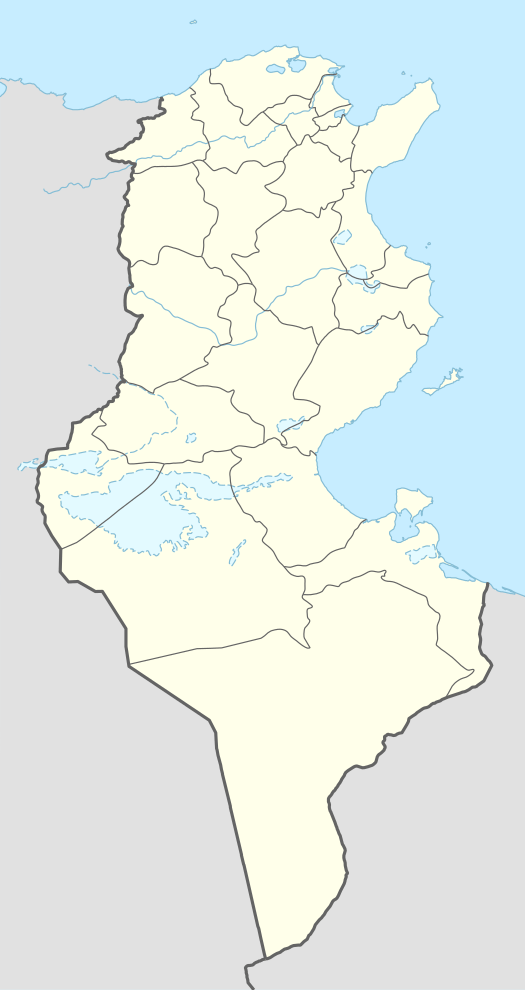Kelibia
| Kelibia | |
|---|---|
 | |
| Coordinates: 36°51′0″N 11°6′0″E / 36.85000°N 11.10000°ECoordinates: 36°51′0″N 11°6′0″E / 36.85000°N 11.10000°E | |
| Country |
|
| Governorates | Nabeul Governorate |
| Government | |
| • Mayor | Farid Ben Rejeb |
| Population (2014) | |
| • Total | 58 524 |
| Time zone | UTC+1 (CET) |
| • Summer (DST) | UTC+2 (CEST) |
| Website | www.commune-kelibia.gov.tn |
Kelibia (Kélibia) (Arabic: قليبية ![]()
History
Known in Roman times as Clypia or Clupea,[1][2][3] the town was founded by the Carthaginians as the fortified town of Aspis in the 5th century BC.[4]
.png)
Clupea was also the seat of an ancient Christian bishopric.
At the Council of Carthage (411), which brought together Catholic and Donatist bishops, Clypia was represented by Bishop Leodicius and the Donatist Geminius. Aurilius was one of the bishops whom the Arian Vandal king Huneric summoned to Carthage in 484 and then exiled. Two other bishops of Clypia took part in the Council of Carthage (525) (Bishop Crescentius) and Council of Carthage (645) (Bishop Stephanus).[5][6][7]
No longer a residential bishopric, Clypia is now listed by the Catholic Church as a titular see.[8]
Sport
Kelibia is one of the best Tunisian volleyball clubs with the Kelibia Olympic Club, founded in 1957 and active since 1959; The club scored two Tunisian championship titles in 1977 and 2003, eight cups in 1972, 1974, 1975, 1976, 1978, 1989, 2004 and 2011 and an Arab Cup of clubs' champions in 1998.
Culture
Since 1964, Kélibia has hosted the Kelibia International Amateur Film Festival, the oldest of its kind in the country.
Kelibia today
The main landmark of Kelibia is the recently restored Kelibia Fort overlooking the harbor. Kelibia is a fishing port and is home to Tunisia's National Fishing School. The town has a population of 52,000 (2014 census).
The 'Muscat de Kélibia', a fruity regional white wine is widely recognized as one of the best of the country.
Twin towns — sister cities



Notes
- 1 2 George Sale, An Universal History (1760), vol. 19, p. 200
- 1 2 C.A. Schwetschke, Allgemeine Literatur-Zeitung (1822), Volumes 1–2, No. 134, col. 197
- 1 2 Pauli Iovii Novocomensis Episcopi Nucerini Historiarum sui temporis (1552), p. 363
- ↑ Hole, Abigail, Grosberg, Michael and Robinson, Daniel (2007). Tunisia. Lonely Planet, p. 101. ISBN 1740599209
- ↑ J. Ferron, v. Clupea in Dictionnaire d'Histoire et de Géographie ecclésiastiques, vol. XIII, Paris 1956, coll. 174-176
- ↑ Stefano Antonio Morcelli, Africa christiana, Volume I, Brescia 1816, pp. 144–145
- ↑ Pius Bonifacius Gams, Series episcoporum Ecclesiae Catholicae, Leipzig 1931, p. 465
- ↑ Annuario Pontificio 2013 (Libreria Editrice Vaticana 2013 ISBN 978-88-209-9070-1), p. 872